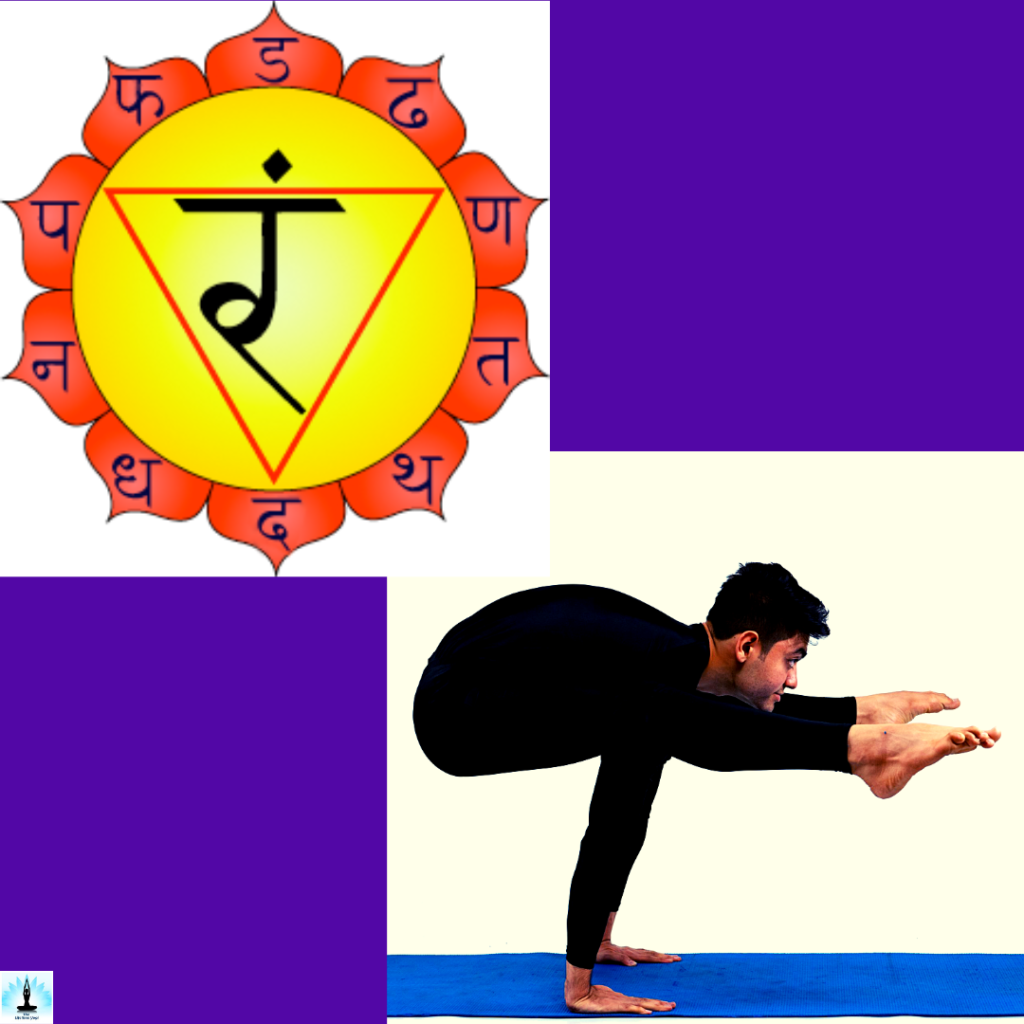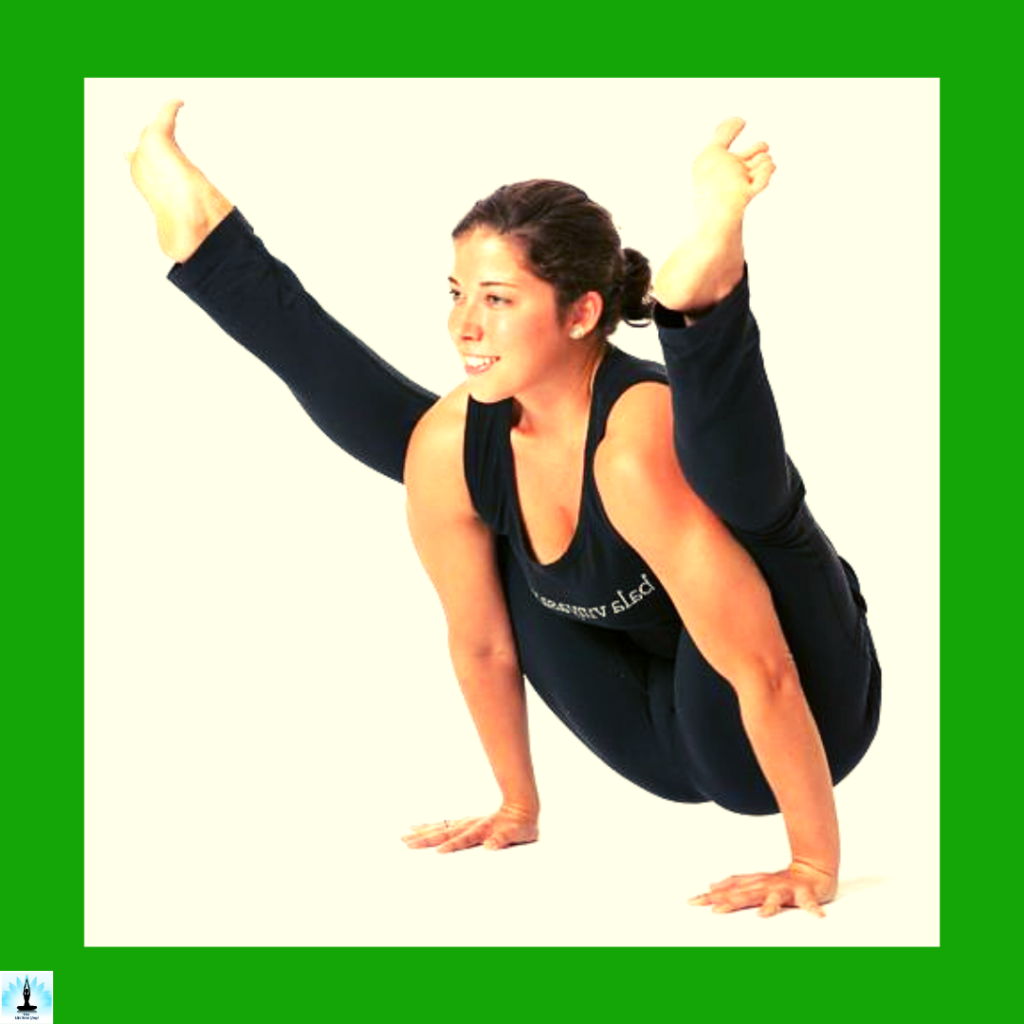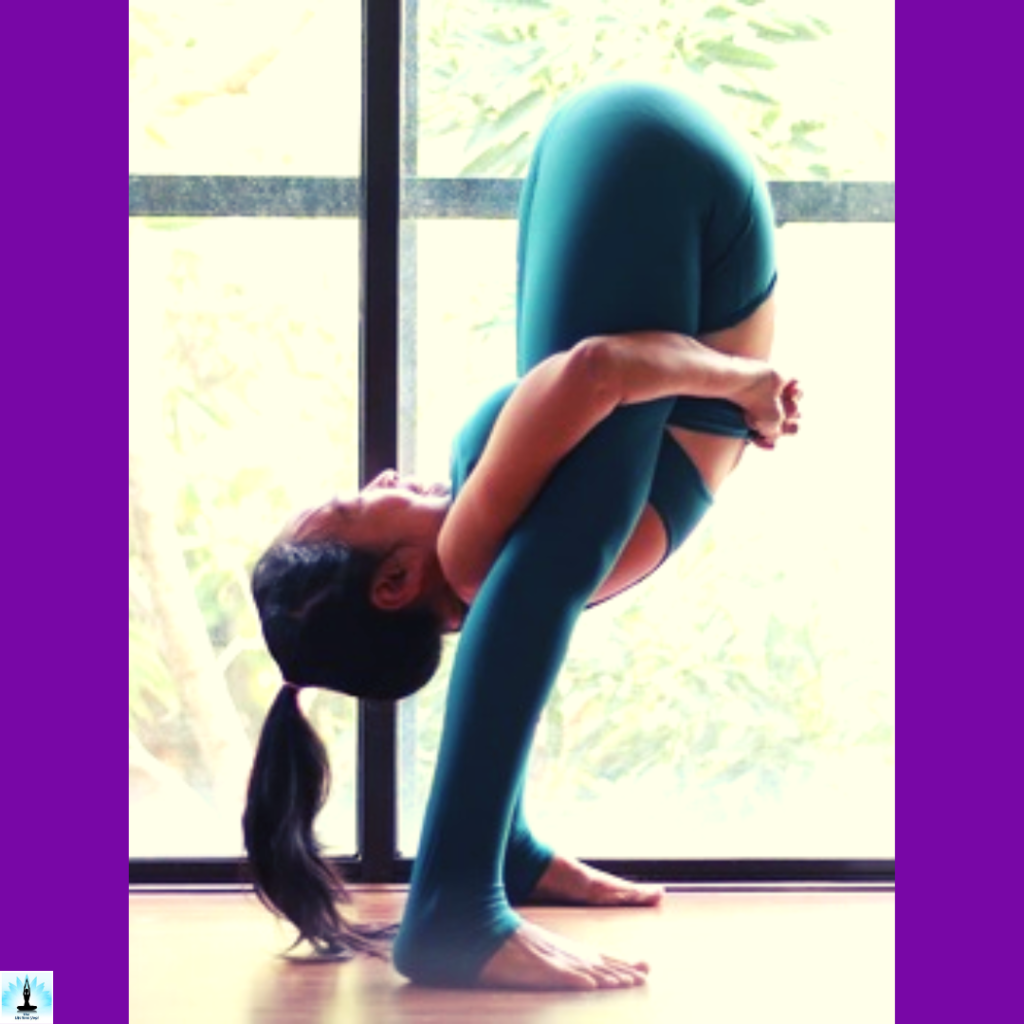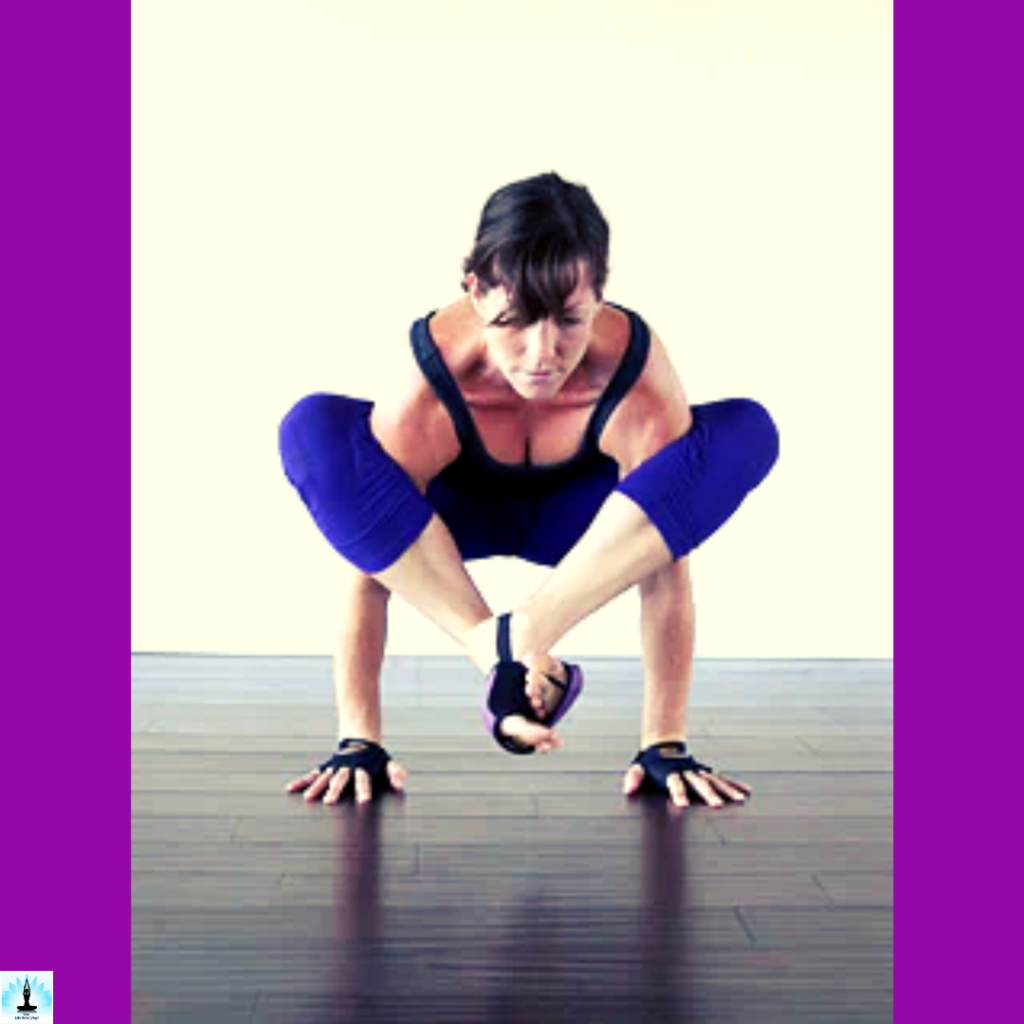Introduction – Top Benefits of Tittibhasana (Firefly Pose) | Step-by-Step Instructions of Tittibhasana (Firefly Pose)
Tittibhasana, commonly known as Firefly Pose, is a dynamic and challenging yoga asana that requires a combination of strength, balance, and flexibility. The Sanskrit name “Tittibhasana” is derived from two words: “Tittibha,” meaning firefly, and “Asana,” meaning pose. This pose reflects the graceful and airborne quality of a firefly in flight. Tittibhasana involves lifting the body off the ground, extending the legs, and balancing on the hands, creating a shape reminiscent of a firefly’s wings.
Table of Contents
The Yogic Philosophy of The Tittibhasana (Firefly Pose)

Tittibhasana, or Firefly Pose, embodies the yogic philosophy by intertwining strength and grace. This challenging asana requires practitioners to lift their body off the ground, creating a sense of weightlessness akin to the flight of a firefly. The pose encourages practitioners to find balance amidst effort, symbolizing the delicate equilibrium sought in yoga between strength and surrender.
Which Chakra is Activated by Practicing Tittibhasana (Firefly Pose)

The Manipura Chakra is located in the abdominal region, above the navel, and is associated with personal power, confidence, and the transformative element of fire. The engagement of the core muscles and the dynamic nature of Tittibhasana require strength and energy centered in the abdominal area, aligning with the qualities associated with the Manipura Chakra. Activation of this chakra is thought to bring balance and empowerment, fostering a sense of self-confidence and inner strength.
Top Benefits of Tittibhasana (Firefly Pose)

Core Strength:
Tittibhasana actively engages the core muscles, promoting strength and stability in the abdominal region.
Arm and Wrist Strength:
Balancing on the hands in Tittibhasana enhances arm and wrist strength, contributing to overall upper body fitness.
Hip Flexibility:
The pose requires hip flexibility for the legs to extend and lift, promoting openness and mobility in the hip joints.
Balance and Coordination:
Achieving the balanced position in Tittibhasana hones coordination skills and challenges practitioners to find equilibrium on their hands.
Shoulder Flexibility:
The pose requires shoulder flexibility as the arms reach back and the chest opens, improving range of motion in the shoulders.
Wrist Flexibility:
The weight-bearing nature of the pose enhances wrist flexibility, beneficial for activities that involve wrist mobility.
Enhanced Digestion:
The compression in the abdominal region during Tittibhasana may stimulate digestive organs, potentially aiding digestion.
Full-Body Workout:
Tittibhasana engages various muscle groups, providing a comprehensive full-body workout that improves overall strength and flexibility.
Sense of Lightness:
The lifted and extended leg position in Tittibhasana creates a sensation of lightness, fostering a connection between physical and mental aspects of yoga practice.
Step-by-Step Instructions of Tittibhasana (Firefly Pose)
- Starting Position: Begin in a standing position at the top of your mat with feet hip-width apart. Engage the core and find a steady gaze.
- Squatting Position: Lower into a deep squat, bringing your thighs close to your chest. Place your hands on the floor in front of you, shoulder-width apart, fingers pointing forward.
- Arm Placement: Position your arms between your thighs, ensuring they are snug against the outer edges of your thighs, creating a shelf for your legs.
- Lifting Hips: Shift your weight forward onto your hands and start to lift your hips, allowing your feet to become light on the ground.
- Extended Leg Position: Straighten your legs forward, lifting them off the ground. Aim to extend them parallel to the floor, creating a straight line from your hands to your heels.
- Core Engagement: Engage your core muscles to maintain balance. Keep the chest lifted, and shoulders broad.
- Balancing on Hands: Balance on your hands, finding a focal point to help with stability. Actively press through the fingertips to lift the chest.
- Straight Spine: Extend the spine, avoiding rounding or collapsing in the upper back. Focus on creating a long line from the crown of the head to the heels.
- Breathing: Maintain steady and controlled breath throughout the pose. Deep inhales and exhales help stabilize the body and calm the mind.
- Hold the Pose: Hold Tittibhasana for a few breaths initially, gradually working toward extending the duration as strength and balance improve.
- Exiting the Pose: To release, lower the legs back to the squatting position, then stand up to return to a standing position.
Advance Variations of Tittibhasana (Firefly Pose)
Eka Pada Tittibhasana (One-Legged Firefly Pose):

Eka Hasta Tittibhasana is an advanced variation where one leg is extended straight while the other remains bent. This asymmetrical variation intensifies the balance and strength required, challenging practitioners to refine their stability and control.
Tittibhasana II (Firefly Pose II):

Tittibhasana II is an advanced evolution of the classic pose. In this variation, both legs are straightened and extended to the sides, resembling the wings of a firefly. This requires enhanced hip flexibility, core strength, and a refined sense of balance.
Therapeutic Applications of Tittibhasana (Firefly Pose)
Tittibhasana offers therapeutic benefits that extend beyond physical strength. This pose actively engages the core muscles, enhancing abdominal strength and promoting better posture. Additionally, the pose stimulates the digestive organs, aiding in digestion and potentially alleviating mild digestive issues. Tittibhasana also challenges and improves wrist strength and flexibility, making it beneficial for individuals seeking to enhance wrist health.
Poses Related to Tittibhasana (Firefly Pose)
Preparatory Poses of Tittibhasana
Malasana (Garland Pose):

Malasana, or Garland Pose, is a beneficial preparatory pose before Tittibhasana. This deep squatting position opens the hips, engages the core, and enhances flexibility in the lower back, all of which are beneficial elements for successfully transitioning into Firefly Pose.
Bakasana (Crow Pose):

Bakasana, or Crow Pose, is another effective precursor to Tittibhasana. Both poses involve balancing on the hands, and Bakasana helps build strength in the arms and wrists while refining the practitioner’s sense of balance. Mastering Crow Pose can provide a solid foundation for progressing to the more challenging Firefly Pose.
Follow-up Poses of Tittibhasana
Bhujapidasana (Shoulder-Pressing Pose):

Bhujapidasana is a natural follow-up to Tittibhasana as it involves transitioning from the arm balance of Firefly Pose into a posture where the knees rest on the upper arms. This advanced asana further challenges arm strength and core engagement while providing a smooth sequence of movements.
Astavakrasana (Eight-Angle Pose):

Astavakrasana is another pose that flows well from Tittibhasana. This arm-balancing posture requires the integration of strength and flexibility, involving a twist of the torso while balancing on the arms. Practicing Astavakrasana after Tittibhasana helps refine arm balance skills and enhance overall core strength.
Beginner’s Tip of Tittibhasana (Firefly Pose)
For beginners approaching Tittibhasana, it’s essential to focus on building strength gradually and refining the necessary muscle engagement. Begin by practicing preparatory poses that target core strength and wrist flexibility. Utilize props like blocks to support the hands and provide stability as you lift into the pose.
Contraindications and Cautions of Tittibhasana (Firefly Pose)
Those with wrist injuries or conditions, such as carpal tunnel syndrome, should be mindful of the stress placed on the wrists and may need to modify the pose. Individuals with lower back issues should practice Tittibhasana with care, avoiding over-arching the spine. Pregnant women and those with high blood pressure are advised to avoid or modify the pose due to its inversion-like nature.
FAQ’s on Tittibhasana (Firefly Pose)
Q: Is Tittibhasana Suitable for Beginners?
A: Tittibhasana is an advanced pose that requires considerable strength and balance. Beginners are advised to start with foundational poses and gradually progress, seeking guidance from an experienced yoga instructor.
Q: What Muscles Does Tittibhasana Target?
A: Tittibhasana targets the core muscles, including the rectus abdominis and obliques. It also engages the muscles in the arms, shoulders, wrists, and hip flexors.
Q: Can Tittibhasana Help with Wrist Strength?
A: Yes, practicing Tittibhasana can contribute to wrist strength. However, individuals with existing wrist issues should approach the pose with caution and consider modifications.
Q: How Can One Improve Balance in Tittibhasana?
A: Improving balance in Tittibhasana involves focusing on a steady gaze, engaging the core for stability, and practicing regularly. Preparatory poses that enhance core and arm strength can also contribute to improved balance.
Q: Can Tittibhasana Be Modified for Those with Limitations?
A: Yes, Tittibhasana can be modified based on individual abilities and limitations. Using props, adjusting the height of the feet, or practicing preparatory poses are common modifications. Consulting with a yoga instructor for personalized guidance is recommended.
Q: What Is the Breathing Pattern in Tittibhasana?
A: Practitioners are encouraged to maintain steady and controlled breathing in Tittibhasana. Deep inhales and exhales help with concentration, stability, and the overall experience of the pose.
Q: Is Tittibhasana Part of a Specific Yoga Sequence?
A: Tittibhasana is often included in advanced yoga sequences that focus on arm balances and transitions. It may be part of vinyasa or power yoga sequences designed to challenge practitioners with a combination of strength and flexibility poses.
Q: Can Tittibhasana Be Practiced During Pregnancy?
A: Pregnant women should avoid Tittibhasana due to the intense core engagement and potential strain on the abdominal region. Prenatal yoga poses that are safe for pregnancy are recommended instead.
Q: How Long Does It Take to Master Tittibhasana?
A: The time it takes to master Tittibhasana varies for each individual. Consistent practice, patience, and the gradual progression from preparatory poses contribute to the mastery of this challenging asana.
Q: Are There Any Precautions for Individuals with Lower Back Issues?
A: Individuals with lower back issues should approach Tittibhasana with caution. Avoiding over-arching the spine and focusing on core engagement can help prevent strain on the lower back. Consultation with a healthcare professional is advised for specific concerns.
Conclusion
In conclusion, Tittibhasana, or Firefly Pose, encapsulates the essence of advanced yoga practice by seamlessly blending strength, balance, and mindful focus. As practitioners navigate the challenges of lifting their body into this dynamic arm balance, they embark on a journey of self-discovery and transformation. Tittibhasana not only hones physical attributes such as core strength, wrist stability, and hip flexibility but also serves as a metaphorical flight towards inner resilience and mental fortitude.
References
- Iyengar 1979, pp. 280–282.
- Sjoman 1999, p. 72.
- Sjoman 1999, pp. 100, 102.
- Iyengar 1979, pp. 308–309.
- Mallinson, James; Singleton, Mark (2017). Roots of Yoga. Penguin Books. p. 125. ISBN 978-0-241-25304-5. OCLC 928480104.
- Sjoman 1999, p. 78, plate 11 (pose 62).
- Iyengar 1979, pp. 296–299.
- Sjoman 1999, p. 69.
- Self, Philip (1998). Yogi bare : naked truth from America’s leading yoga teachers. Nashville, Tenn: Cypress Moon Press. p. 291. ISBN 978-0-9666894-0-2. OCLC 42077034
